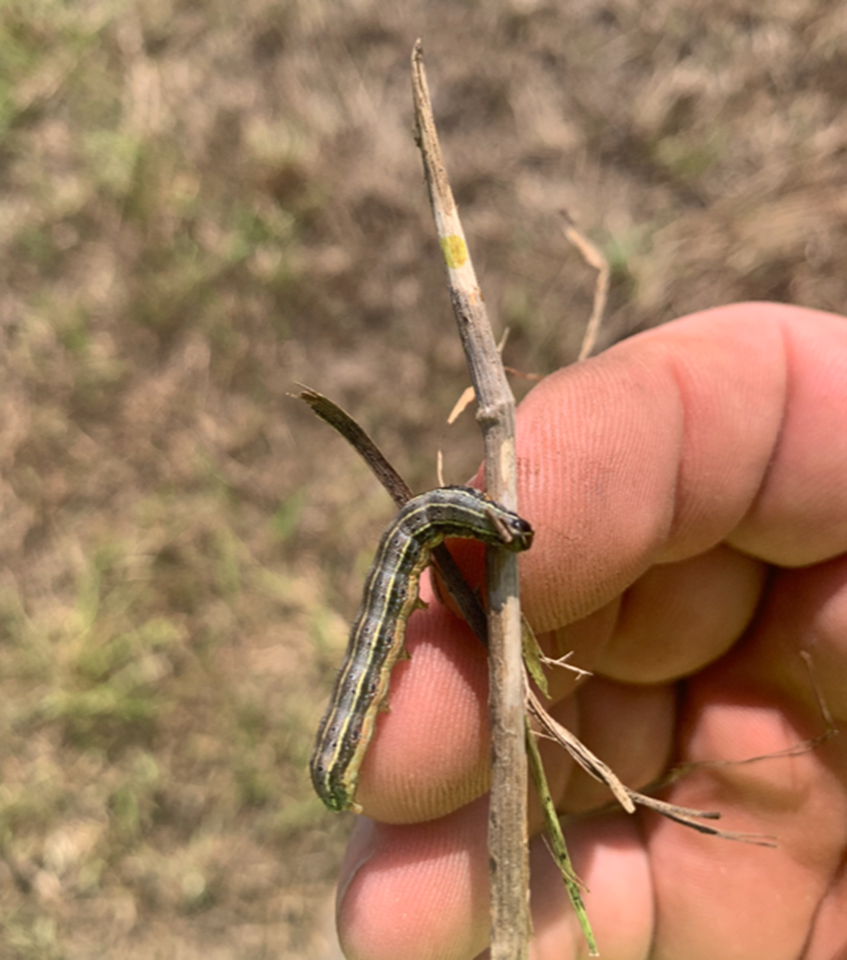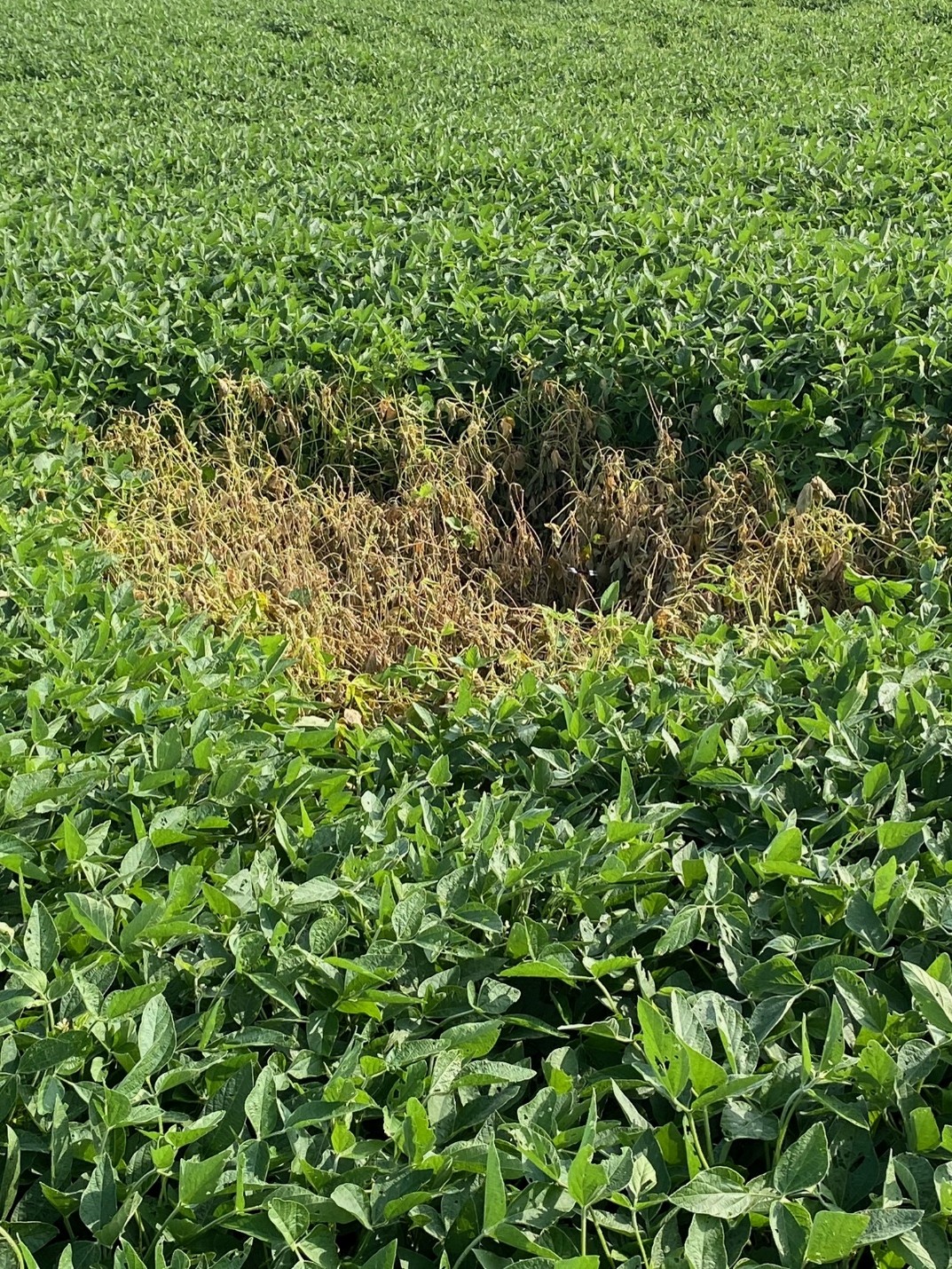 Figure 1. Fall armyworm larvae showing characteristic inverted “Y” on its head. Image Growmark
Figure 1. Fall armyworm larvae showing characteristic inverted “Y” on its head. Image Growmark
Recent reports of fall armyworm (FAW) have increased in Southern Illinois. FAW is an erratic pest of relative concern to several crops throughout the Midwest. Most often we observe issues in forage grasses, alfalfa, and soybeans, especially those in double crop systems. FAW also feed on corn and can be problematic in late-planted fields and fields with hybrids lacking a labeled Bt trait for this pest. Damage typically is worse during droughty conditions. Large larvae are voracious feeders and approximately 80% of their feeding and damage within the last 3 days of their time as larvae, making early detection essential.
General Overview
FAW do not overwinter in the Midwest. Adult moths migrate into the region from Southern areas each year, typically around mid-July, where they mate and deposit eggs in grassy areas. Once initial food sources are depleted, they “march” en masse into lush areas, which typically includes soybean fields, late planted corn, and forage grass / alfalfa fields, and potentially small grains and cover crops. Once their development is complete, they move to the soil and pupate. Usually only one generation per growing season is observed in the Midwest. Heavy FAW infestations in fields this year does not indicate an issue will occur next season as the insect cannot survive our winter conditions.
FAW like to feed on lush, green tissues. Damage includes mild to severe foliar feeding in most crops, and in soybeans pod feeding can occur. Stems also can be cut (Figure 2). In some cases, plants can have leaf tissue completely removed. Feeding on corn ears similar to that of corn earworm may be present on late-planted corn fields.
Management
There are no established thresholds for FAW, but the following guidelines can be used to assist with management decisions:
Soybeans
Averaging more than 10 FAW larvae in 25 sweeps across a field in small soybeans or 20% defoliation pre bloom.
Post bloom- >15% defoliation
Late Planted Corn
Survey 20 consecutive plants from 5 locations in field. If 25% of plants show symptoms, consider treatment. High volume treatments give the best results. Bt corn provides control or high levels of suppression of FAW if labeled for this pest.
Pastures and Hayfields
>2 larvae per square foot

Figure 2. An example of Fall armyworm damage to a soybean field. Damage often occurs in patches throughout the field. Image Growmark
Final Notes and Considerations
Note that control of FAW in pastures, soybean, and alfalfa with pyrethroid insecticides has frequently been poor. Remember that earlier generations of this pest are exposed to whatever management practice is used on crops in warmer regions, increasing the likelihood that the individuals that develop in Midwest regions may be insensitive or resistant to practices, such as specific insecticide modes of action. If a pyrethroid insecticide is used to control FAW, make sure to check that field within 5 days after application to ensure that it was effective. If not, a second application of a labeled insecticide containing a different mode of action may be warranted. It may be wise to use a premix insecticide containing 2 modes of action, or tank mixing a pyrethroid with a different insecticide mode of action with FAW activity. Larval size also is important, and many labels state what instars are controlled or if rates need to be adjusted to suppress larger larvae. Therefore, when scouting fields, keep track of not only the number of FAW, but also their size as this can help select an optimal control strategy if needed. When making applications, try to make them as close to sunrise or sunset as possible.
Remember to carefully read all labels and follow all grazing and preharvest intervals.
Contact your FS Crop Specialist with any questions or concerns you may have regarding this pest.
References:
Flanders, K. 2019. Management of fall armyworm in pastures and hayfields. https://www.aces.edu/blog/topics/farming/management-of-fall-armyworm-in-pastures-and-hayfields/
Stewart, S. 2021, Fall armyworms running amok (pastures, soybeans, lawns, and more). https://news.utcrops.com/2021/07/fall-armyworm-running-amok-pastures-soybean-lawns-and-more/
Villanueva, R. 2021. Abrupt presence of fall armyworms in double-crop soybeans in Kentucky. https://kentuckypestnews.wordpress.com/2021/08/03/abrupt-presence-of-fall-armyworms-in-double-crop-soybeans-in-kentucky/
Related Categories: soybeans, insects, foliar feeders, fall armyworm (new), pastures, cover crops, crop management